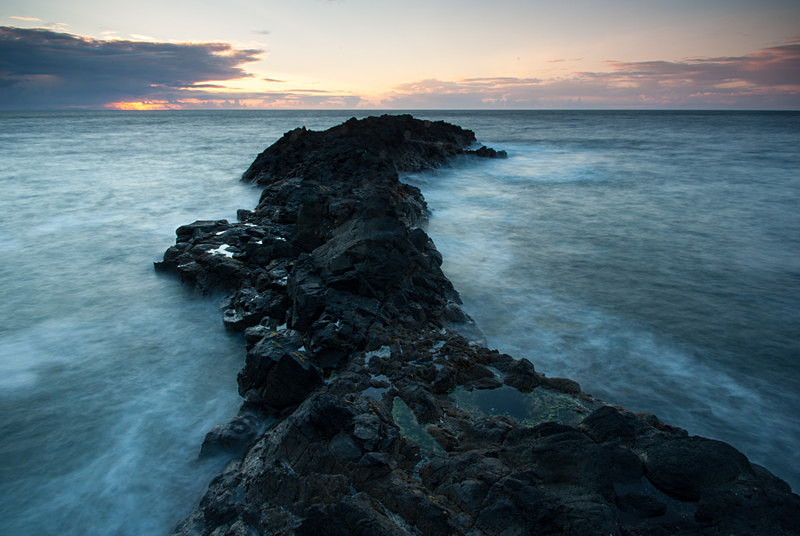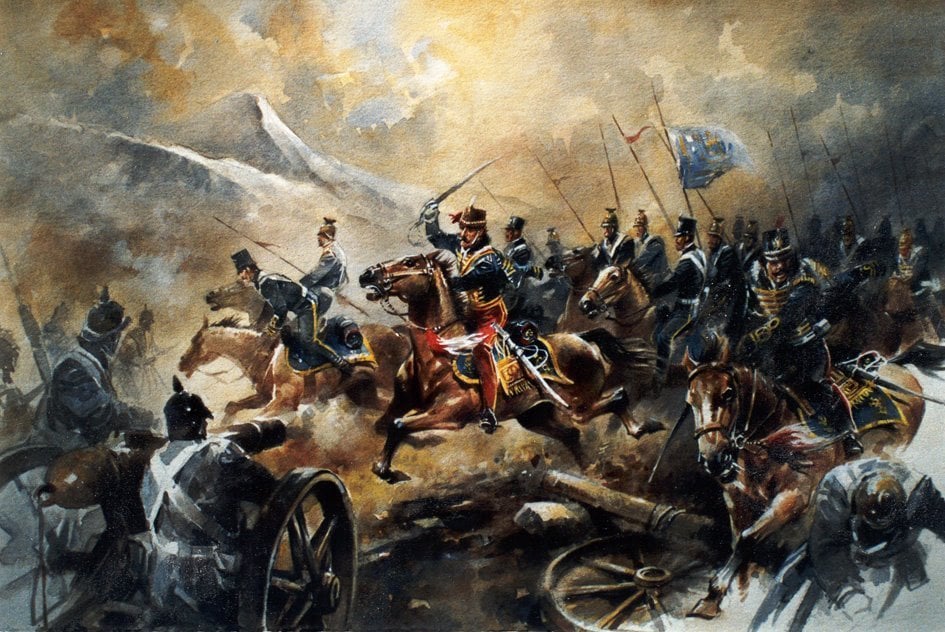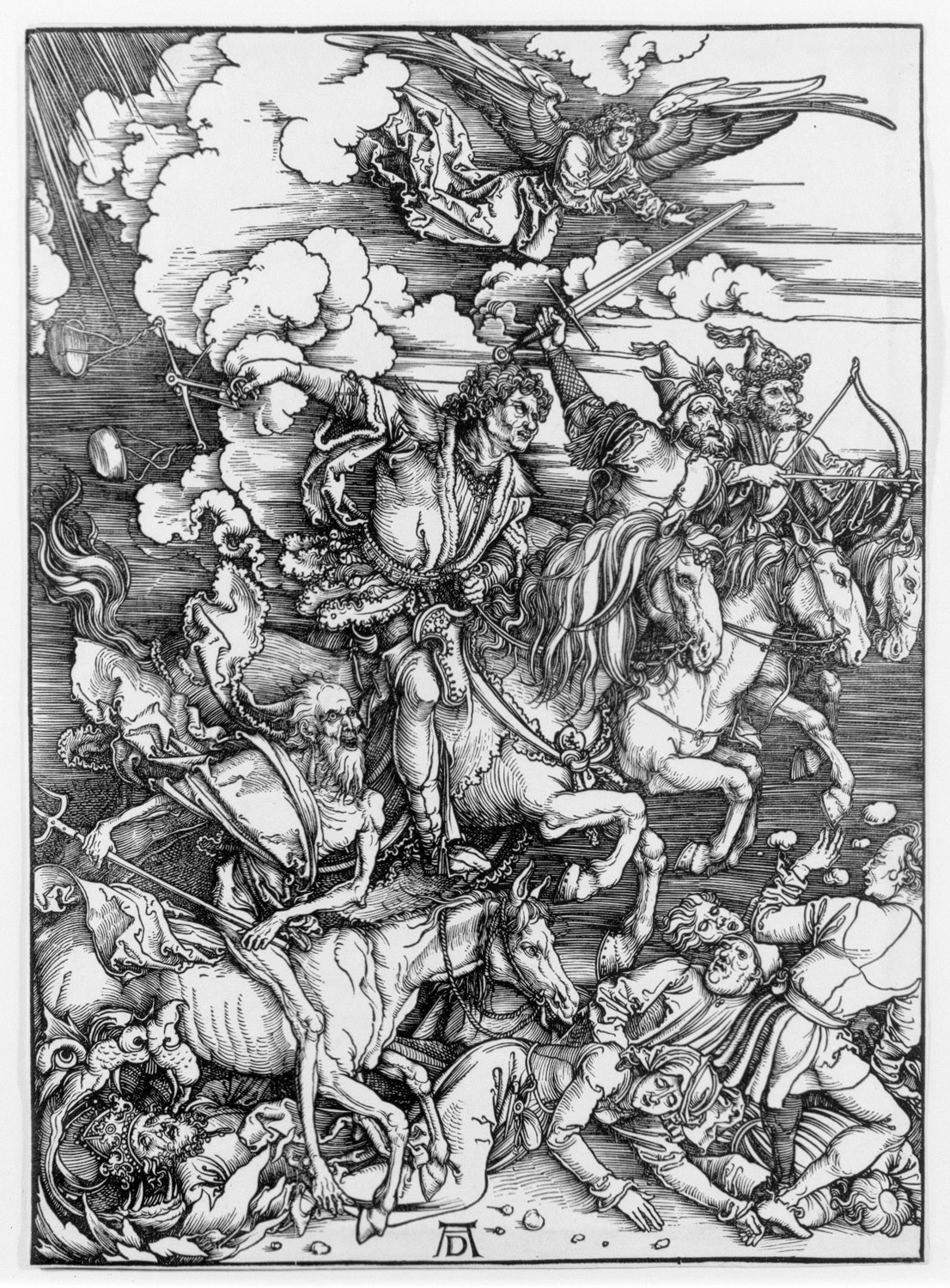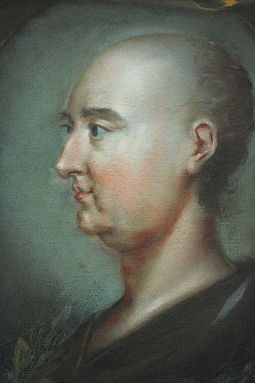25 October 1854: The Charge of the Light Brigade on this day. It took place in the Crimea on the Black Sea in what was then part of the Russian Empire. At the time Britain, France and Sardinia were at War with the Czar over Russia’s attacks on the Turkish Empire. This most famous (or infamous) cavalry charge was one with quite a few Irish connections.
The British and the French dispatched an Expeditionary Force to the Crimea to take the naval base of Sevastopol. In order to conduct the siege the small port of Balaklava was utilised to unload supplies for the British Army. On the morning of 25 October the Russians attempted to seize it but were repulsed. The battle however continued and by that afternoon the Light Brigade was tasked with attacking the Russian batteries that were being withdrawn.
‘The Light Brigade consisted of five regiments; the 4th Light Dragoons, the 8th Kings Royal Irish Hussars, the 11th Hussars, the 13th Light Dragoons and the 17th Lancers.
The 4th Light Dragoons had one Irish officer serving in the Crimea, Cornet Robert Newcomen Goore-Booth of the Co. Sligo family, but he did not ride in the charge, being on sick leave aboard ship from 12th October to December 1854. Thirty-three Irish other ranks served in the 4th in the Crimea, of whom eighteen rode in the charge. Of these, four were killed, eight were wounded and three taken prisoner, one of whom was also wounded.
The 8th Hussars were an Irish Regiment and two Irish officers and nine-four other ranks served in the Crimea. One Irish officer and twenty-seven Irish other ranks actually charged with the brigade, of whom eight were killed, five wounded and two taken prisoner, one of whom was also wounded. The two Irish officers who served in the 8th in the Crimea were Captain Lord Killeen, later tenth Earl of Fingall, who did not re-join the Regiment until after Balaklava, and Lieut. Viscount Fitzgibbon, who was almost certainly killed in the charge. John Viscount Fitzgibbon was the son of the third Earl of Clare and a grandson of ‘Black Jack’ Fitzgibbon, the controversial Lord Chancellor of Ireland at the time of the Union. He had joined the 8th in 1850‘.
The 11th Hussars, who had been commanded by Brigadier the Earl of Cardigan, had two Irish officers in the charge, Lieut. George Houghton from Kilmanock House, Wexford, who was mortally wounded and died at Scutari on 22nd November and Lieut. Roger Palmer of Castle Lackin, Co. Mayo who survived, later transferred to the 2nd Life Guards and eventually rose to become a general. Troop Sergeant-Major Patrick Teevan from Belturbet and Private Larkin, who was killed, were two of the Irish rank and file in the charge from the 11th.
The 13th Light Dragoons had a total of forty personnel from Ireland serving in the Crimea. However only one Irish officer, Cornet Hugh Montgomery of Ballydrain, Co. Antrim, and four other ranks from Ireland, charged with the brigade. Montgomery was slain, having first shot four Russian hussars. Corporal Joseph Malone of the 13th won the V.C. at Balaklava for assisting in the rescue of the mortally wounded Captain Webb of the 17th Lancers. Malone performed his act of bravery while returning on foot after his horse had been shot.
From the 17th Lancers, two officers and fifteen other ranks of Irish origin participated in the charge. Captain White who had been educated at Trinity College Dublin, was severely wounded and Captain Winter from Agher, Co. Meath, was killed (there is a memorial tablet to him in the church there). Sergeant John Farrell of the 17th had his horse killed beneath him and won his V.C. assisting Sergeant Berryman of his regiment and Corporate Malone of the 13th to carry Captain Webb off the field. Troop Sergeant-Major Denis O’Hara who rallied some of the remnants of the 17th after the charge was afterwards painted by Orlando Norrie. The portrait is now in the museum of the 17/21st Lancers.
Source: Viscount Dillon.
Irish Sword Vol xii - No. 48.
The seed of the whole disaster lay in botched instructions given by Lord Raglan, the British Commander to one Captain Louis Edward Nolan, who was of Irish-Italian stock. He was the finest Light Cavalry man in the Army, but somewhat rash and hot headed. On reaching the place where the Cavalry Division was drawn up he handed over a note dictated by Raglan which read:
"Lord Raglan wishes the cavalry to advance rapidly to the front, follow the enemy, and try to prevent the enemy carrying away the guns. Troop horse artillery may accompany. French cavalry is on your left. Immediate.
But he did not realise that while all was clear from his vantage point up on the heights the withdrawal of the enemy pieces was hidden from view to the recipients of the message. To make matters worse Lord Lucan was the senior officer on the spot. Lord Lucan had vast estates in the west of Ireland in Co Mayo but the families title originated from the village of Lucan Co Dublin. He was thoroughly hated in Mayo for the number of evictions he carried out in the Great Famine. The commander of the Light Brigade was Lord Cardigan, who while considered something of a dunderhead no one would doubt his bravery that day. The two men were brothers in law and coldly detested each other. A dispute arose over what they were to do. Captain Nolan then made his dramatic and fateful interjection, appearing to point up the valley before them he loudly proclaimed to his superiors:
There is the enemy - there are the guns!
Lord Lucan then reluctantly ordered his much loathed relation to take the Light Brigade up the valley before them and seize the Russian guns at the far end. It was a hopeless task of course as there was no cover and the enemy had the place swept by guns on both flanks as well as where their main position was. The Brigade set off at a slow trot then at the gallop. Just as they gathered pace Nolan dashed out in front waving his sabre above his head as he tried desperately to shout something. At that very moment a Russian shell exploded overhead and he fell from his horse a dead man. What he meant to say no one knows but it looks like he realised his fatal error and tried to turn the Brigade in another direction.
The regiments made it down the valley, meleed amongst the enemy batteries but could not hold them as the Russians poured volleys of fire into them and prepared to counter attack with their Cossacks. They slowly made their way back up the valley, some on horseback but many on foot.
The brigade was not completely destroyed, but did suffer terribly, with 118 men killed, 127 wounded and about 60 taken prisoner out of some 670 men who took part . After regrouping, only 195 men were still with horses. The futility of the action and its reckless bravery prompted the French Marshal Pierre Bousqet to state "C'est magnifique, mais ce n'est pas la guerre." ("It is magnificent, but it is not war.") He continued, in a rarely quoted phrase: "C'est de la folie" — "It is madness." The Russian commanders are said to have initially believed that the British soldiers must have been drunk!
War correspondent William Howard Russell, who was from Dublin and was reporting for the London Times witnessed the battle, declared our Light Brigade was annihilated by their own rashness, and by the brutality of a ferocious enemy.
Of course there were scapegoats. Lord Raglan blamed Lord Lucan, who in turn blamed Captain Nolan and Lord Cardigan blamed Lord Lucan for being foolish enough to order it! But Raglan died out there as did Nolan while Lucan and Cardigan returned home and continued their military careers - though neither of them saw action again.
But we will leave the final say to Lord Cardigan who led the whole bloody affair:
I think that every man who was engaged in that disastrous affair at Balaklava, and who was fortunate enough to come out of it alive, must feel that it was only by a merciful decree of Almighty Providence that he escaped from the greatest apparent certainty of death which could possibly be conceived.







_p370_THOMAS_RUSSEL.jpg/330px-MADDEN(1888)_p370_THOMAS_RUSSEL.jpg)


